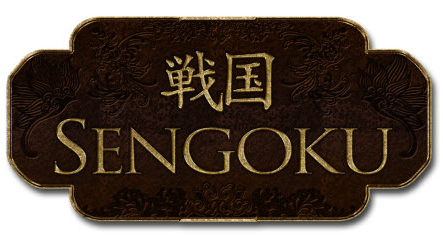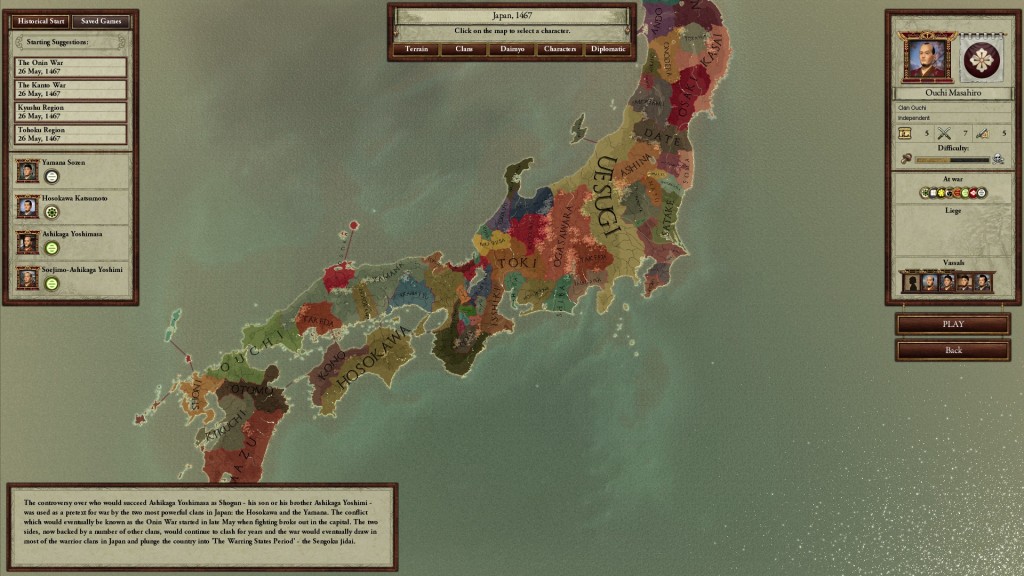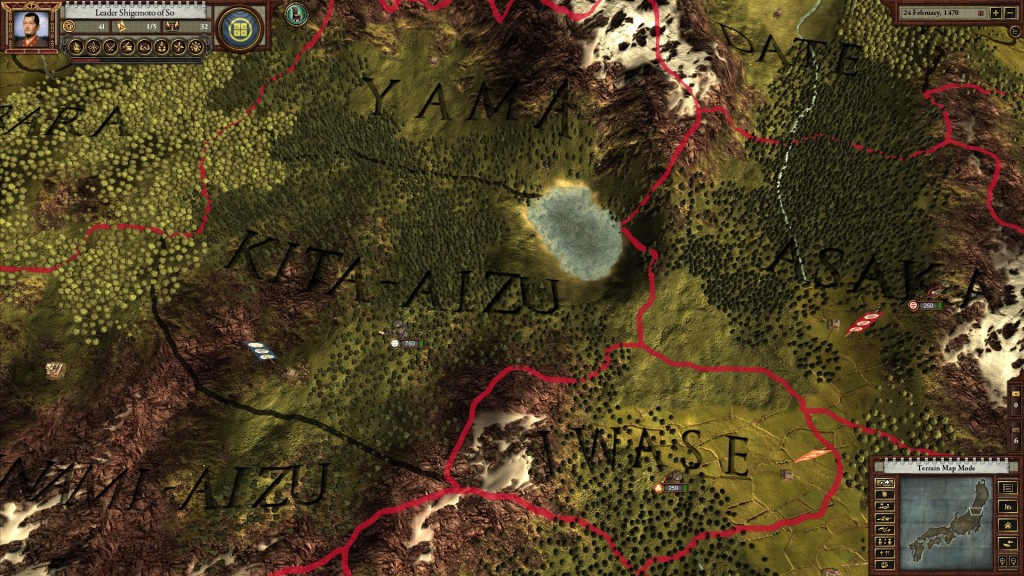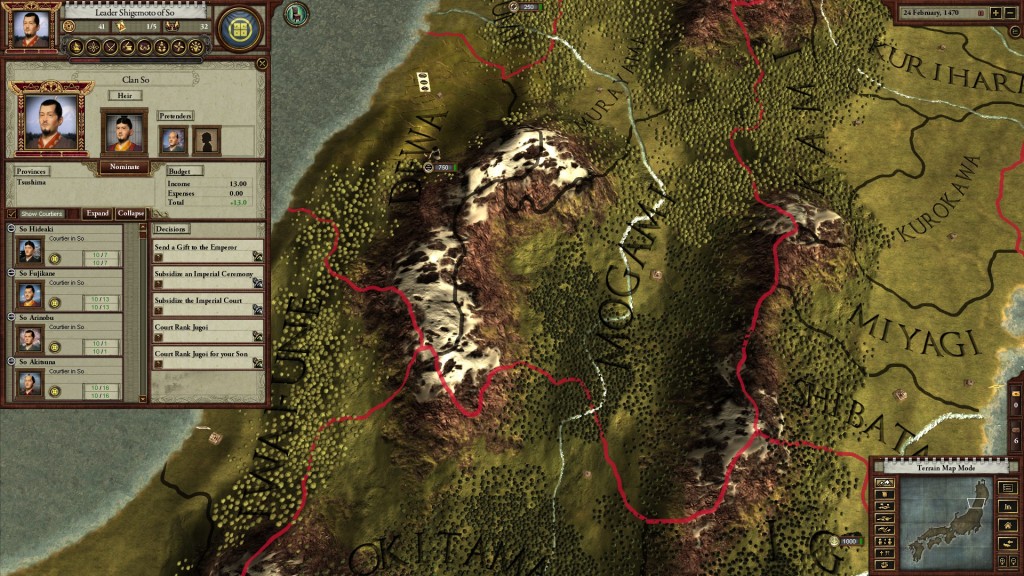
The map, with clans shown. From here you can choose who to play as.
The visual aspects of Sengoku are beautiful. Being a grand strategy, interface design is very important, and this game does not fail to deliver. Menus are neat and tidy, buttons look great and are nice to look at. However, in some areas buttons or menus can be hard to navigate if you do not already know what you are doing. There is a learning curve, but it is not as steep as some games in this category. A big step forward in this game is the 3-Dimensional map. The rolling hills dotted with trees, the rivers flowing through them and the snow-topped peaks make the game look great. Players will find themselves zooming in just to look at the scenery. This also helps draw the player into the game, and keeps the game from looking like a “map”. This is a model.
Sengoku is definitely centred around war. Through the course of a campaign there will be little time for peace, although war is not the only aspect of the game. Players can upgrade settlements with various buildings through their Master of Ceremonies, whom they can elect to their court. Along with the Master of Arms and Master of the Guard, the people of the court enable the player to keep their lands in check. These people can collect taxes, expand guilds, restore order to settlements and perform many other actions. The court menu makes it easy to control all these options.
An example of the terrain.
In war time, soldiers can be levied from their home provinces and combined into stronger armies. Players can also recruit retinues for characters or wandering ronin to fight for them. The levied troops can be disbanded and returned to their home province when the player wishes, and may be raised again if needed. Battles are fought on the campaign map. They involve standing an army in the same province as a enemy, and letting them do their business. Sieges are also handled this way: the player can either storm the castles or wait for the enemy to surrender. This game is not one for those who want to see battles up close; it is the strategy that makes Sengoku.
Diplomacy is also present, although players can only handle it directly if they are the leader of a clan. There are many options available, aside from the arbitrary “Declare War” and “Offer Peace”. Players can also secure alliances through the exchange of hostages, offer marriages between clans, and many other actions. Players can also start plots against other clans, in which multiple characters conspire to attack at once. This really makes things interesting.
Some of the terrain and interface.
Sengoku is a very polished game. Unlike in the preview version, no bugs have been experienced this time. There are no serious defects to note. It all seems to just “work”. Sengoku looks great and is a joy to play. While the historical setting and limitations (the only playable area is Japan), along with decreased re-playability may lead to the game feeling less grand than others in the genre, it is evident that it was made with care, and this makes it stand out.



Recommended Comments
There are no comments to display.
Please sign in to comment
You will be able to leave a comment after signing in
Sign In Now